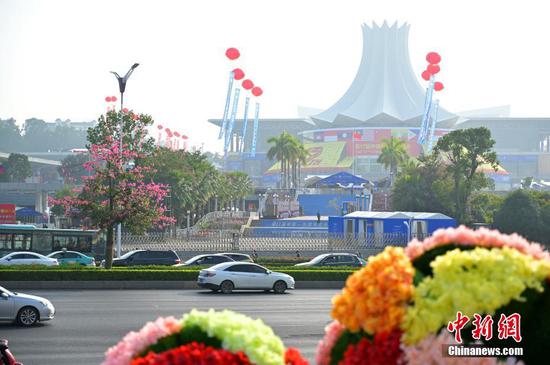
Aerial photo taken on April 15, 2020 shows workers working at the construction site of a 5G base station at Chongqing Hi-tech Zone in Chongqing, Southwest China. (Photo/Xinhua)
Chinese telecom carriers are likely to build more than 1 million new 5G base stations next year, as the cost of 5G base stations is expected to go down in 2021, a renowned Chinese telecom expert said.
According to estimates from Wu Hequan, an academician at the Chinese Academy of Engineering, that would bring the total number of 5G base stations in China to more than 1.7 million by the end of 2021.
Wu said in an interview with China Daily despite the fallout from the COVID-19 outbreak, Chinese telecom carriers have managed to build more than 600,000 new 5G base stations this year, in addition to about 100,000 5G base stations built in 2019.
That has made 5G services available in all Chinese cities at prefecture level and above.
"As the construction of 5G networks accelerates, the cost of building each 5G base station will go down. Even if Chinese telecom carriers earmark the same amount of 5G investments in 2022 as they have done this year, they can build far more 5G base stations next year than this year," said Wu, who often participates in government-hosted 5G forums.
"I believe Chinese telecom carriers will build more than one million 5G base stations next year, though the specific construction targets will have to wait for the telecom carriers' official announcements," Wu added.
China Mobile, China Telecom and China Unicom did not immediately respond to requests for comment.
Wu's remarks are in line with China's top industry regulators' predictions the nation will "moderately" push ahead 5G construction in the next few years. The Ministry of Industry and Information Technology said in October as the country is set to enter a lead-in period in the next three years, China will continue to build 5G networks in a rhythm that is moderately ahead of schedule, so the wider coverage of 5G can help promote its use in more industrial and consumer scenarios.
That lead-in period, according to some industry insiders, means new products, new formats and new models of 5G application are constantly emerging and such applications are shifting from single application to large-scale and systemic scenarios.


















































